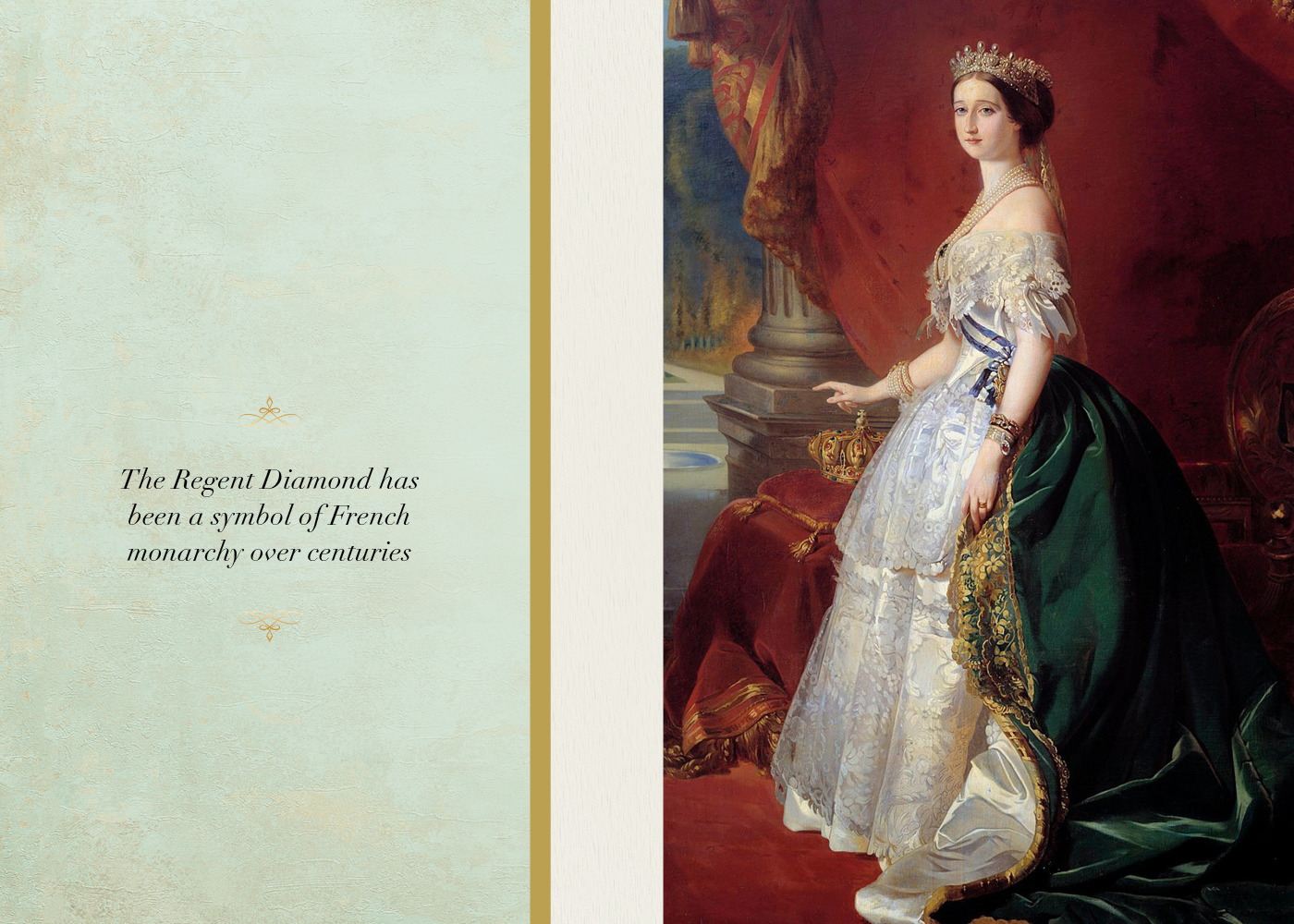From Partial to Paris: The Epic Story Of The Regent Diamond
The unsurpassable value and brilliance of this rare natural diamond has made it a treasure of the ages. This is the story of the Regent diamond and its journey from the mines of Golconda to the French Crown.
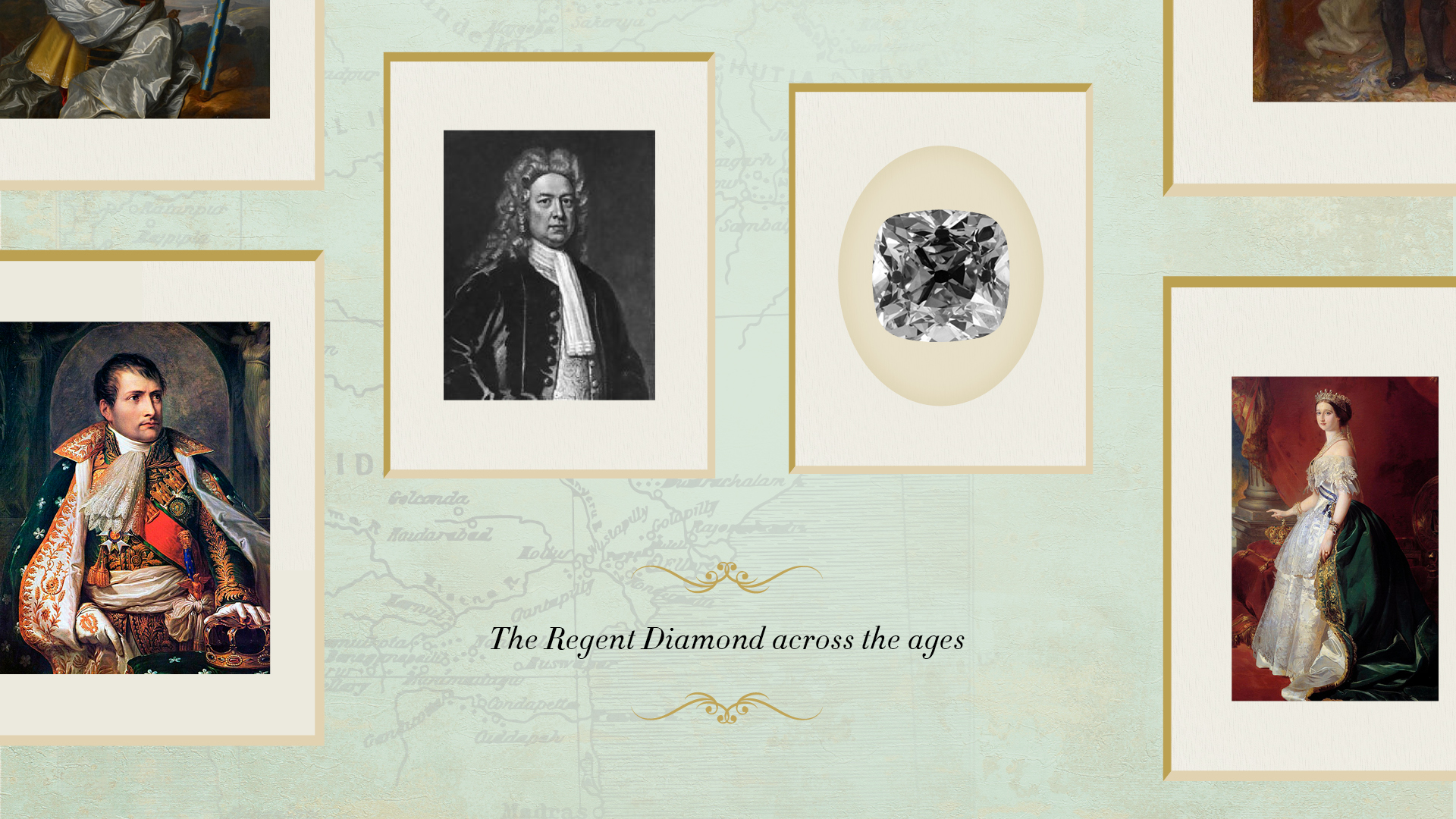
India was the world’s primary source of natural diamonds from the 7th century BC to the 18th century AD. And the mines of the Sultanate of Golconda, in South India, produced some of the most famous and extraordinary natural diamonds known to man. In this series on the Golconda diamonds, we trace the story of that rare miracle of nature that’s come to be known as the Regent diamond.
The Origins Of An Epic Diamond Gem
It was the winter of 1701 when Thomas Pitt, the then Governor of the British settlement of Madras, was brought an extraordinarily large stone still very much in the rough. Well over 400 carats, he described the diamond as being flawless and of ‘first water’ or of the highest quality with perfect translucence.
Legend has it that it was excavated in 1698 from Partial, one of the mines of Golconda, east of the Krishna River. The muddy mines of Golconda were famous the world over for producing the purest natural diamonds, which were much sought after by both the rich and the royal. As the story goes, it was a miner who found the stone. Hoping to profit from its sale and seize his freedom, the miner smuggled it out by hiding the stone in the bandages of a wounded leg. Deceit soon overtook hope. The miner was outwitted by a ship’s captain who then sold the stone to a gemstone trader. That trader, Jaurchund (also called Jamchund in some texts), had approached Pitt, hoping to make a fortune in the bargain.
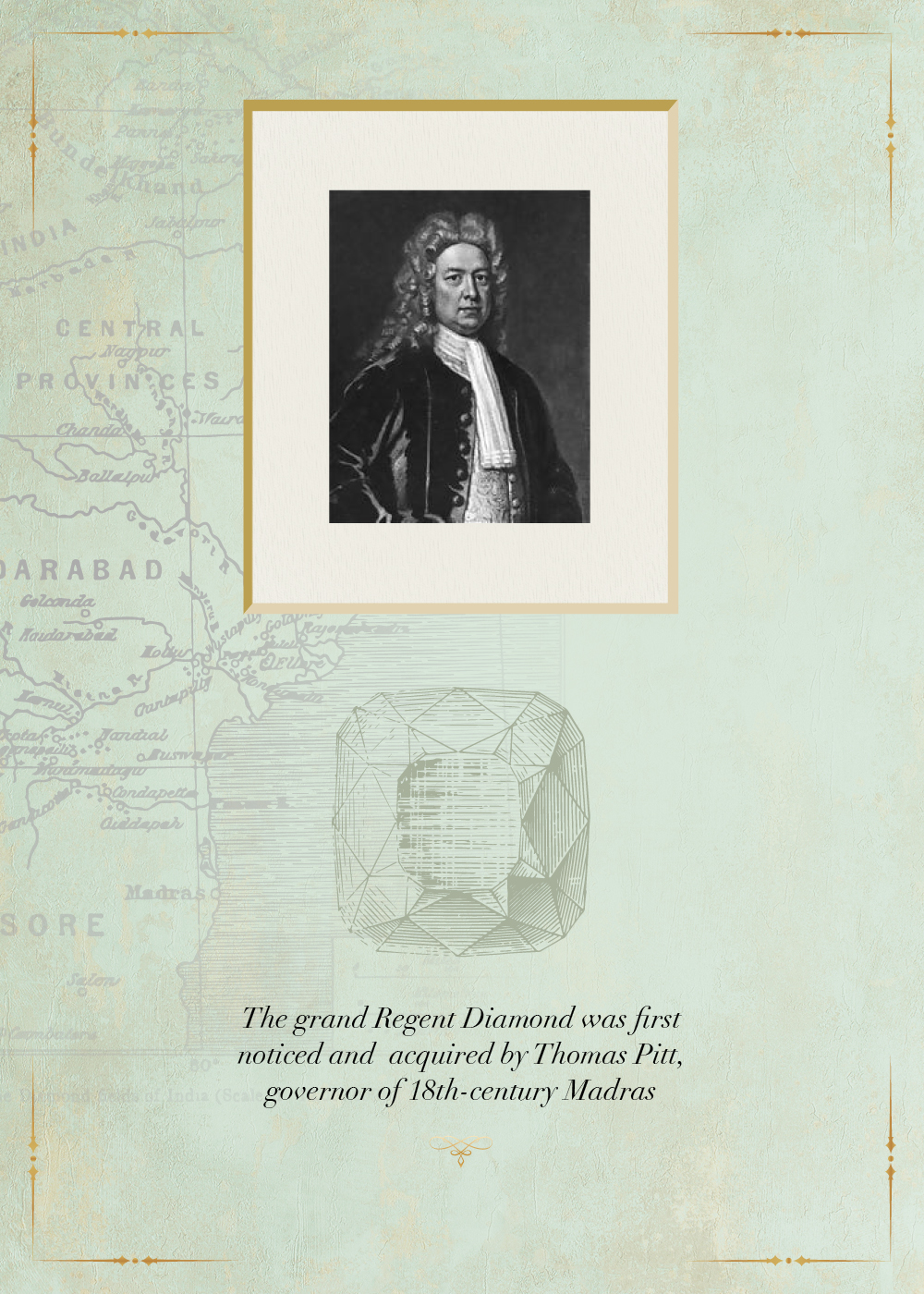
The Many Legends Of The Regent Diamond
Since his arrival in India three years earlier, Pitt had been exporting diamonds and other precious stones to England. But the price that Jaurchund wanted was larger than any Pitt had heard of—over £80,000. Also, Pitt’s agent in London wasn’t sure of finding a willing buyer for large diamonds. You see only a king would have the appetite for such a diamond, and Europe’s rulers were warring at that time. Money to pamper oneself was scarce. Jaurchund pursued Pitt and after many months of haggling, Pitt in his own words, confirms having bought the stone for a little over £20,000. He almost immediately had his son Robert carry it to London, hidden in the heel of his shoe. Over a two-year period, a lapidary by the name Harris chiselled the rock using a technique that’s believed to have originated in Venice at the beginning of the 17th Century—the brilliant cut. This allowed light to penetrate the stone and make it sparkle with an inimitable intensity.
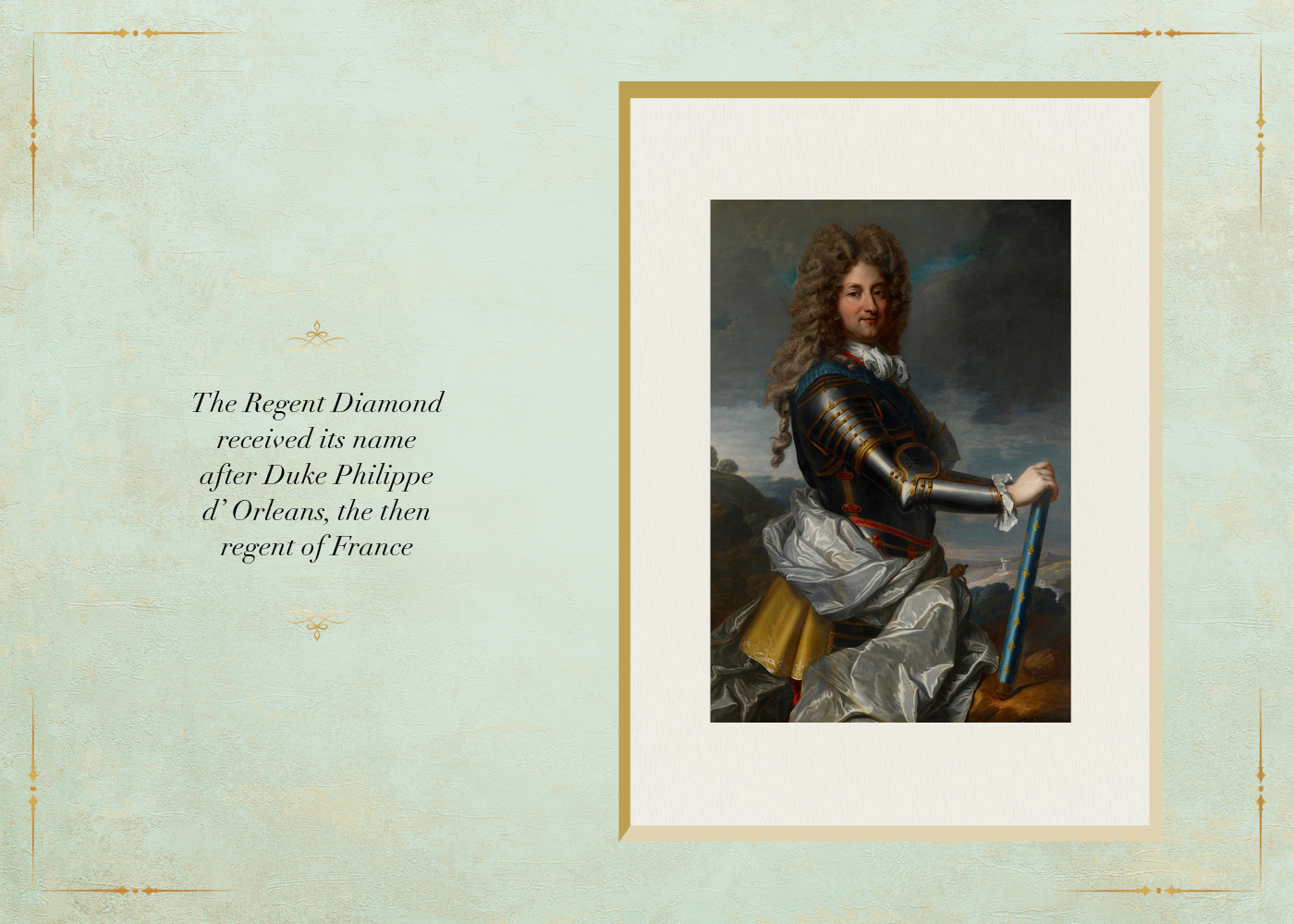
By the time it was ready for sale in 1706, the Pitt diamond as it had come to be known, had already captured popular imagination. Stories of how Pitt had obtained it fraudulently swirled in the media. Publications in England and France carried letters from his detractors, and rebuttals from his well-wishers. One of the wild claims made was that the stone had formed the eye of an idol, and was removed by force from a temple in Bengal. Such was the drama that Pitt, who by then had returned to England, is said to have kept the diamond close at all times. Rarely did he sleep in the same bed two nights in a row. He was constantly on edge. As much he and his agents laboured, it took Pitt over a decade to finally find a buyer in Duke Philippe d’ Orléans, the then Regent of France who ruled in the name of Louis XV. In 1717, the Duke decided to add Pitt’s diamond to the French Crown’s collection of legacy natural diamonds. Reportedly the sum agreed upon was £135,000, though, as per letters left by Pitt’s grandson only a part of it was ever paid in cash. The rest was left to be recovered from jewellery handed over as security against payment. Then on, Pitt’s diamond came to be known as the Regent and was worn in crowns and hats by French monarchs Louis XV and Louis XVI. Even by the infamous queen Marie Antoinette.
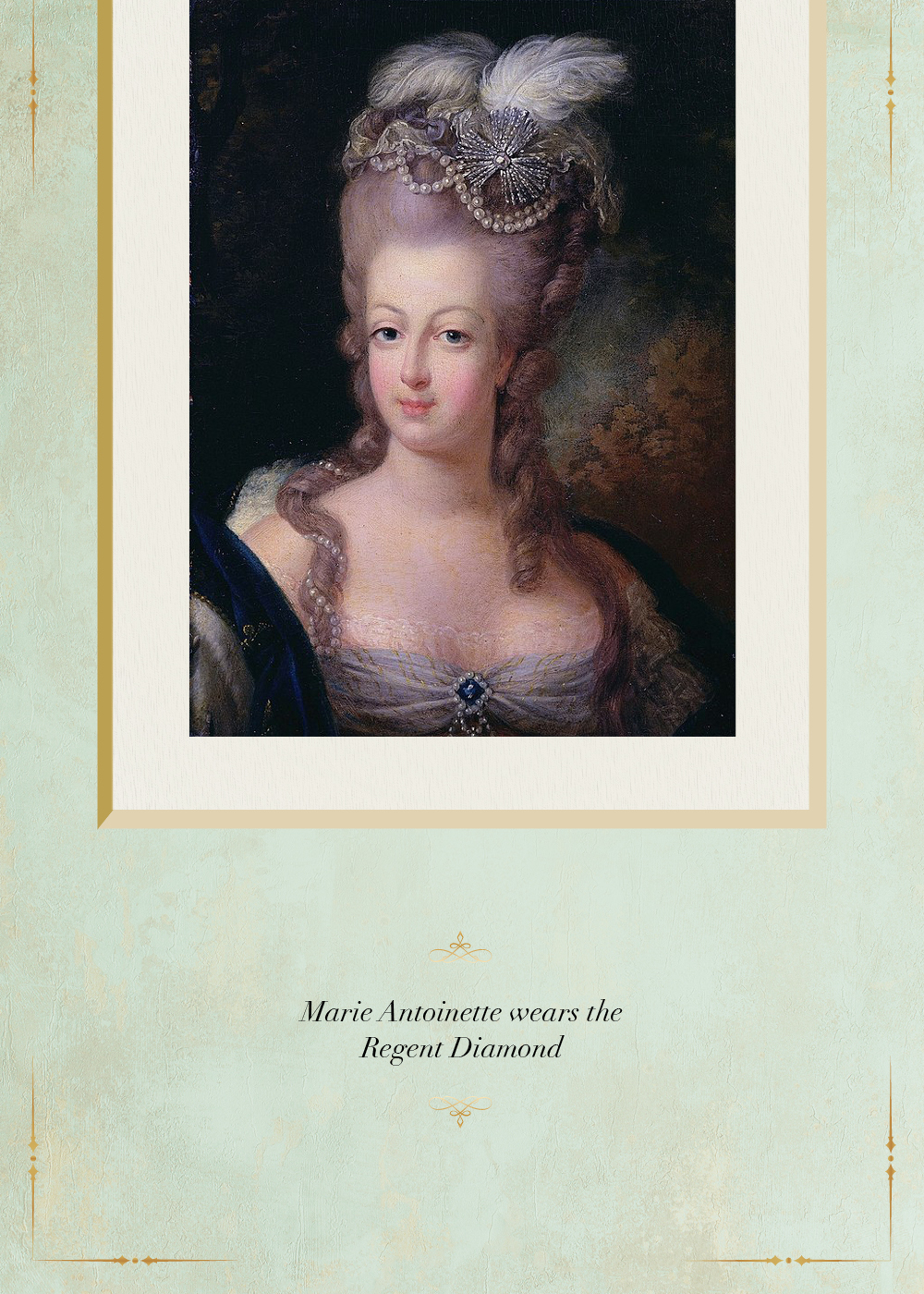
The French Crown’s Favourite Diamond Jewels
As history churned this legacy diamond was also caught up in its turns especially the radical change and social strife that followed the decade-long French Revolution (1789-99). In 1792, the Regent along with much of the Crown’s jewellery was stolen. It was found a year later hidden in the ceiling of a Paris cabaret. The brilliance of the Regent was undiminished and it was used to guarantee loans taken for state expenses, including those of war. Later, the Regent adorned the double-edged sword of Napoleon Bonaparte who became emperor of France in 1804. When he was sent into exile, the Regent was taken away to Austria by his wife. It was later returned to France by her father Francis II, Emperor of Austria. The Regent then stayed in French hands and was mounted on the crowns of Louis XVIII, Charles X and Napoleon III. It found its final spot in the Greek-style diadem of Napoleon III’s wife, Empress Eugenie.
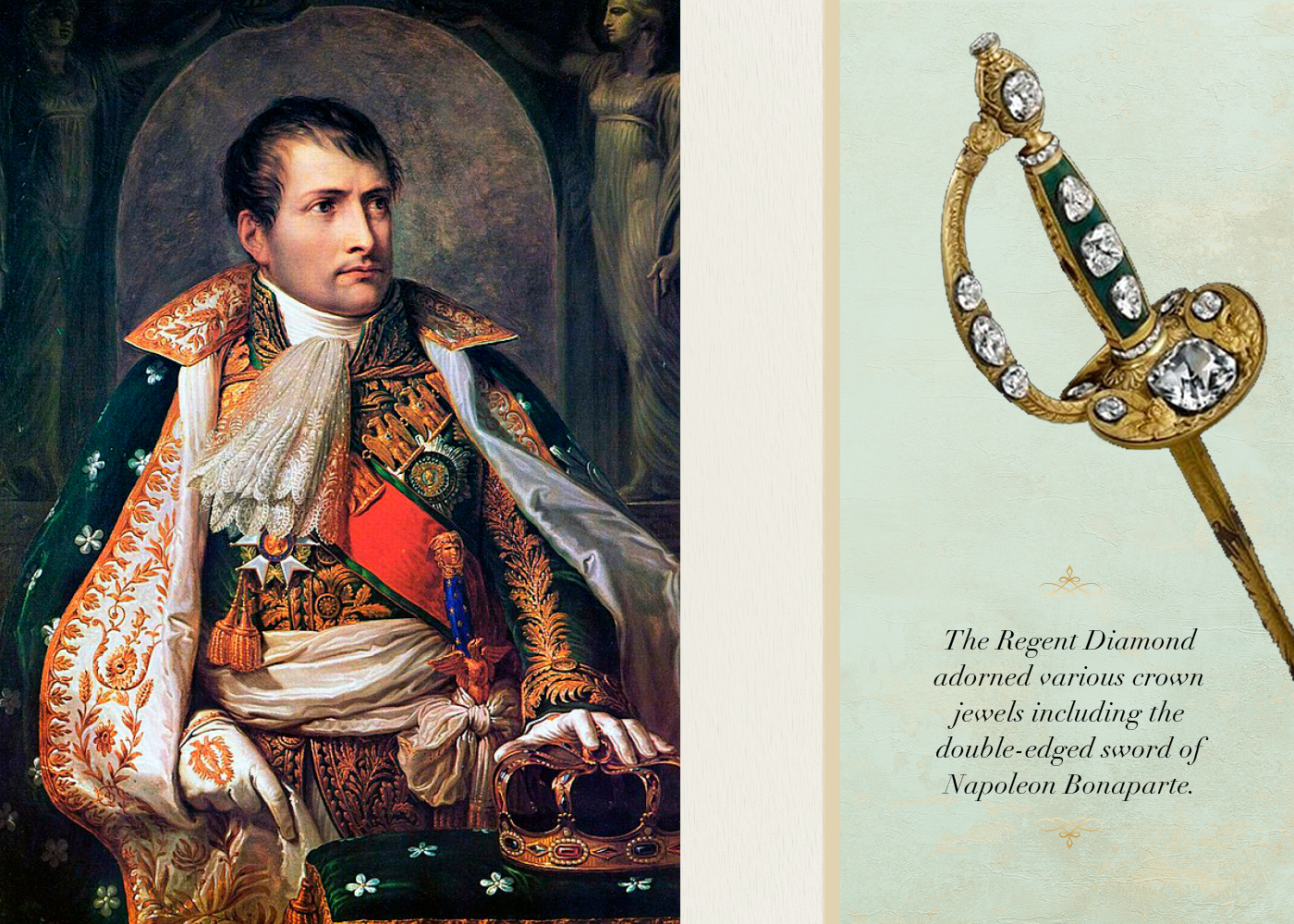
Hope, deceit, despair and strife. They followed the Regent’s journey from the pits of Partial to Paris. Through it all the Regent has lost not a carat of its brilliance. Today it sits among the French crown jewels at the Apollo Gallery in the Louvre Museum. This natural diamond is the perfect example of nature’s billion-year-old beauties that needs to be seen to be believed.
